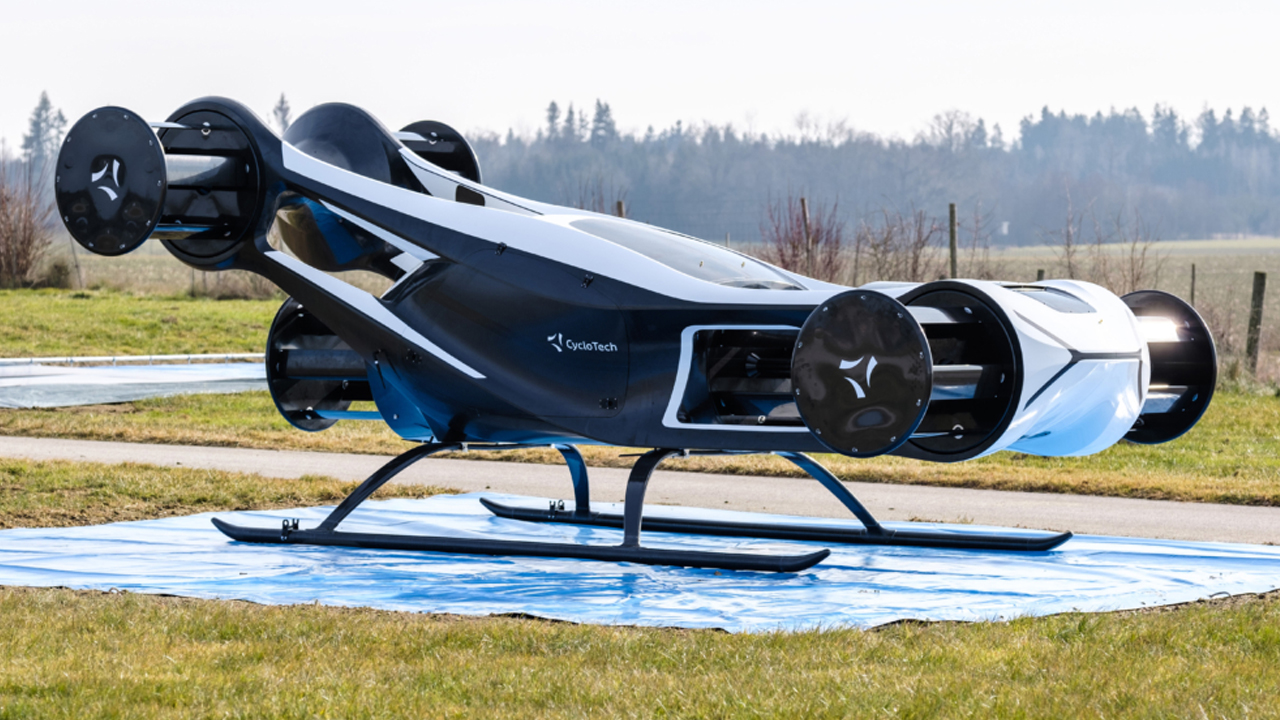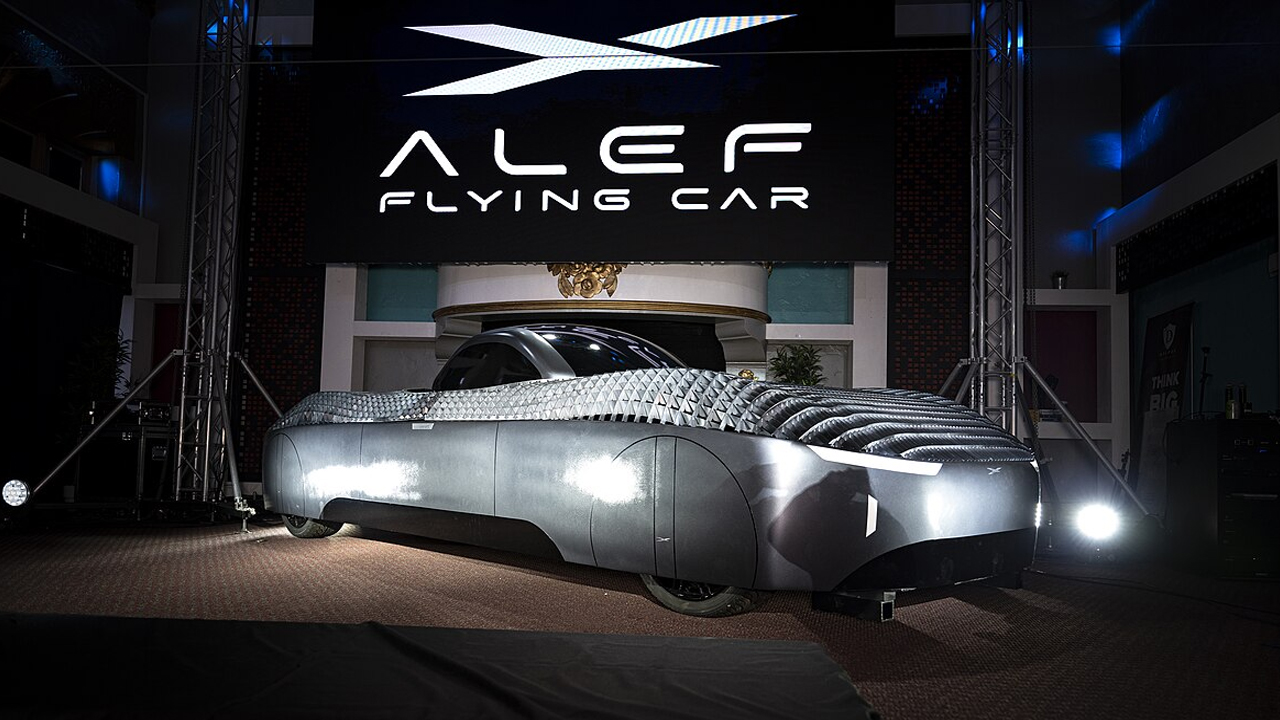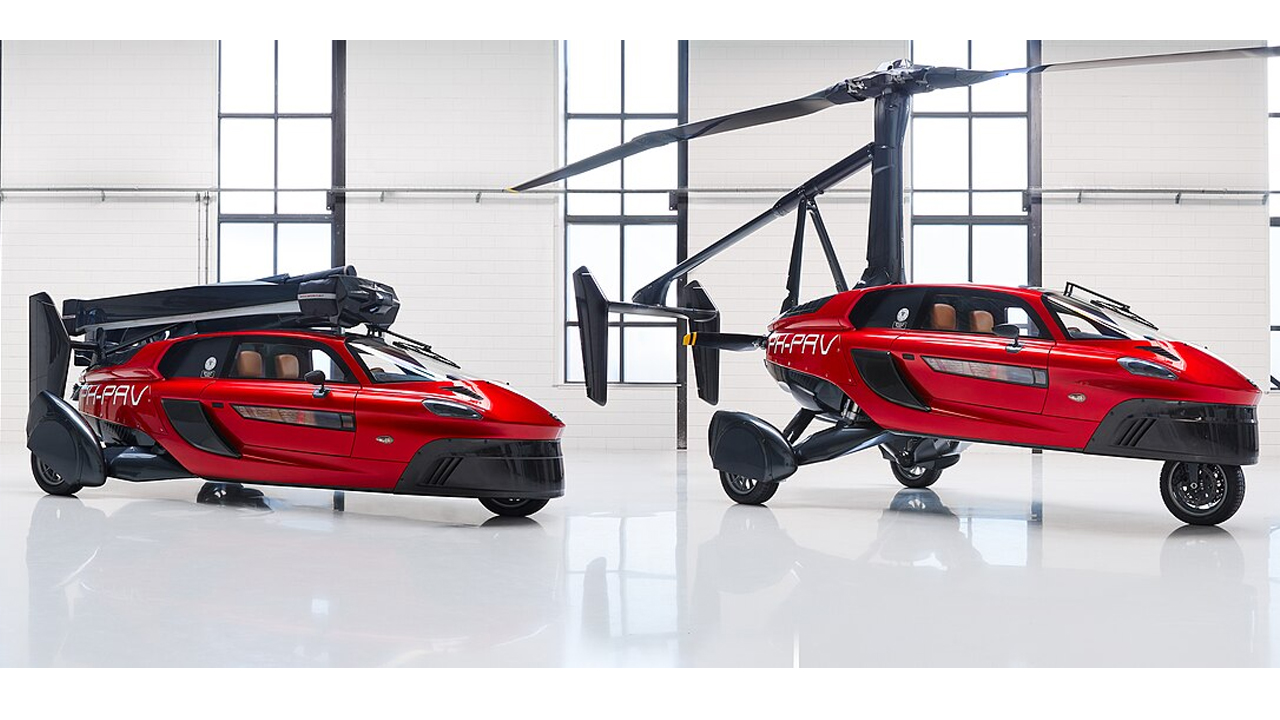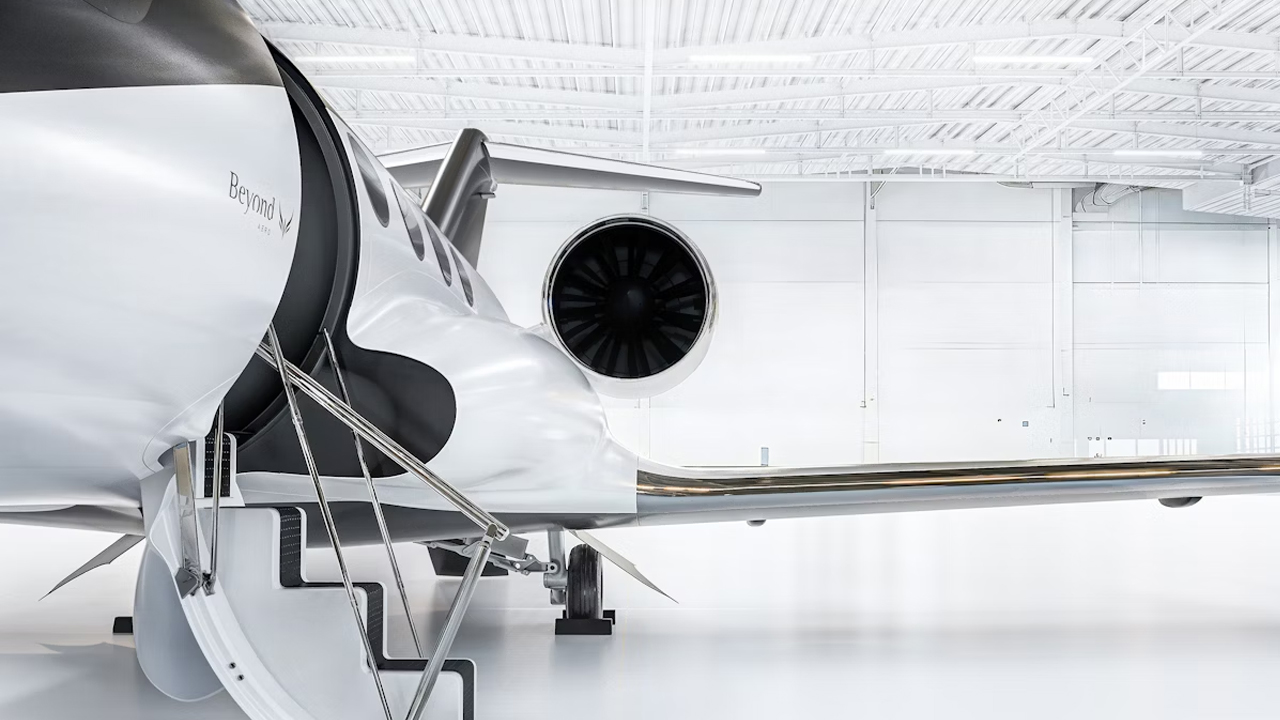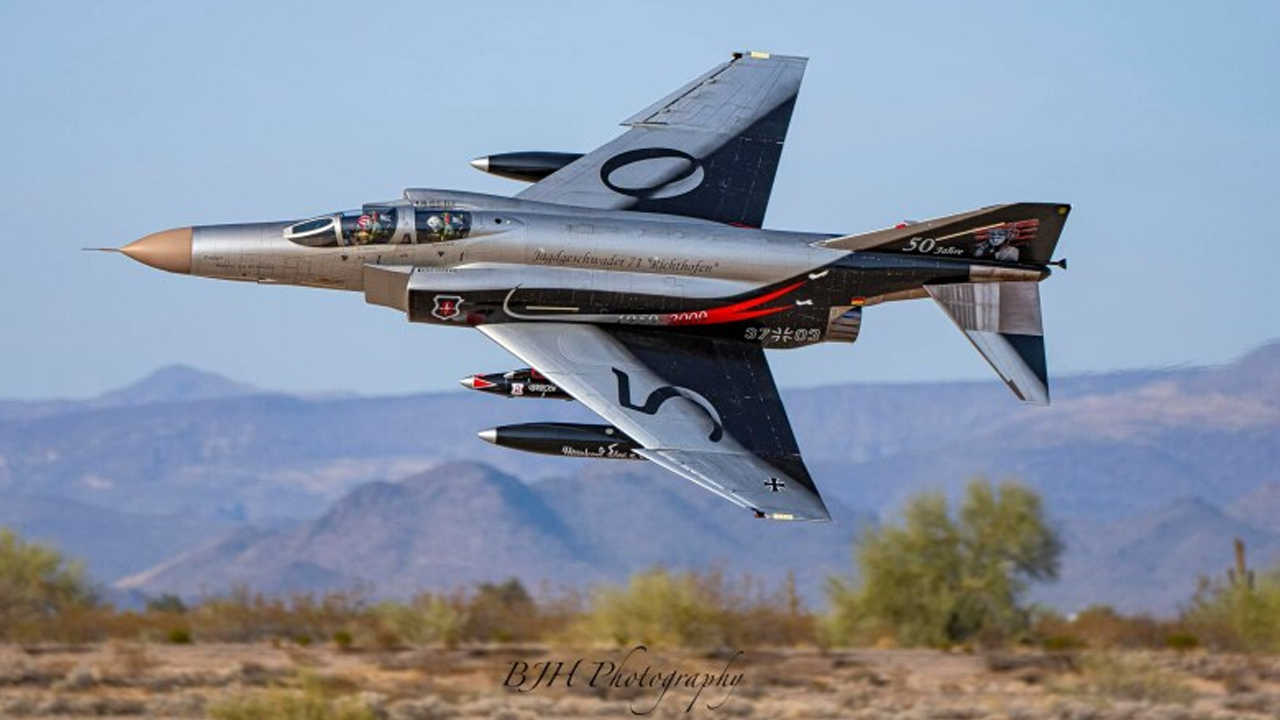There’s a new aircraft on the radar that doesn’t look like anything else in the sky—and that’s exactly the point. CycloTech’s BlackBird eVTOL skips the usual drone-style rotors and instead uses spinning barrels called CycloRotors to control direction with full 360° thrust. It’s compact, strange-looking, and unapologetically different—but it works. After just 11 months from concept to flight, the BlackBird is already turning heads in the race for urban air mobility. Here’s a breakdown of what makes this flying machine stand out, and why it might actually be the future.
360° Thrust Vectoring: A New Approach to Flight Control
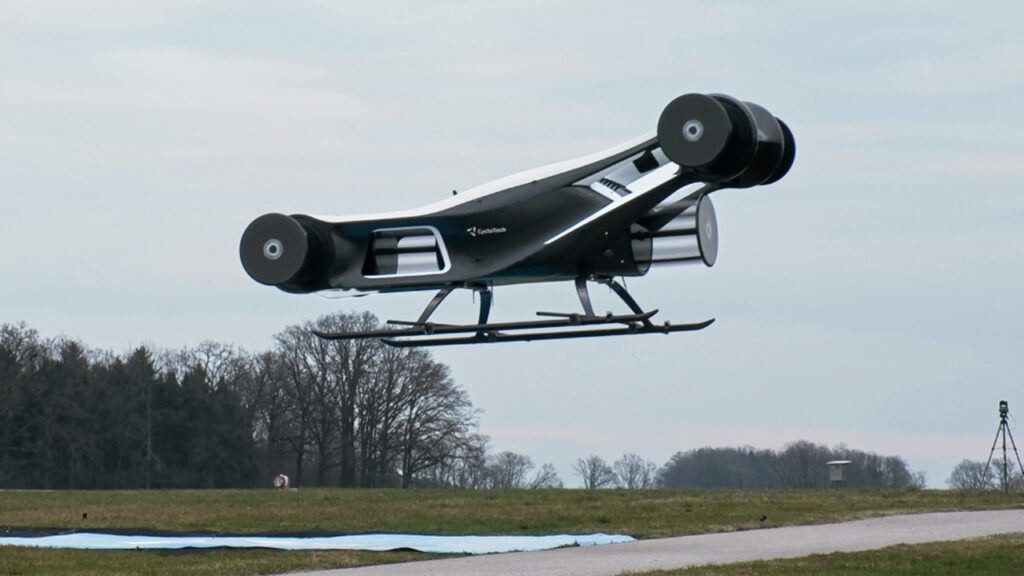
The BlackBird’s six CycloRotors provide full-circle thrust control, enabling it to move in any direction without tilting. This design allows for vertical takeoff and landing, hovering with a pitch angle, mid-air braking, and precision landing even in challenging weather conditions. (Source: CycloTech)
By decoupling the flight path from the aircraft’s orientation, the BlackBird offers a stable and comfortable ride, even in adverse conditions. This setup also allows for unique maneuvers like parallel parking in the air. (Source: CycloTech)
Compact Design for Urban Environments
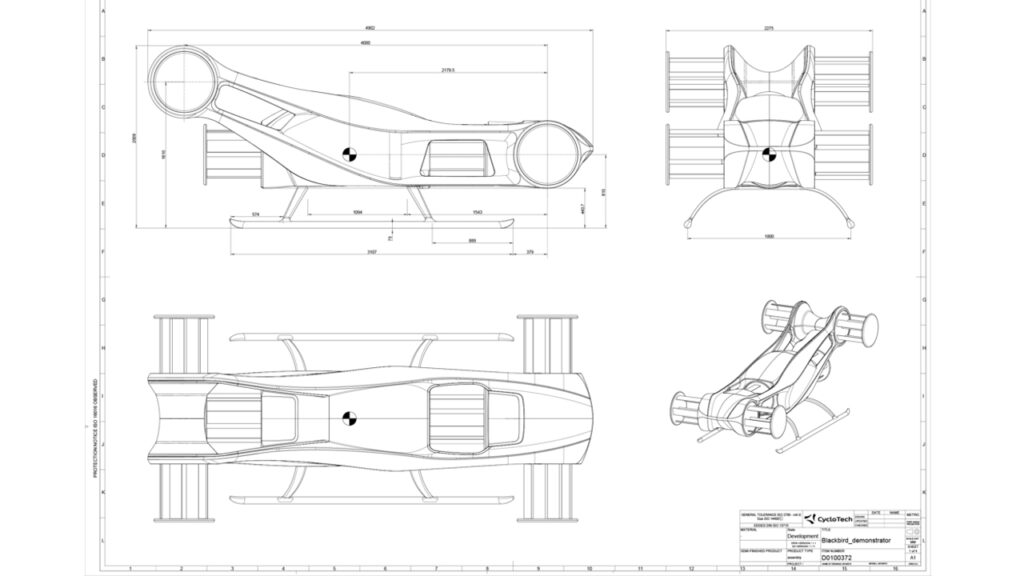
Measuring 4.9 meters in length, 2.3 meters in width, and 2.0 meters in height, the BlackBird is designed for urban settings. Its compact size allows it to operate in confined spaces without the need for special infrastructure. (Source: CycloTech)
The aircraft’s design enables it to land on inclined surfaces and perform precision landings, making it suitable for various urban applications. Its 340 kg maximum takeoff weight and top speed of 120 km/h make it a practical option for short-distance travel. (Source: CycloTech)
Rapid Development Timeline

CycloTech developed the BlackBird from concept to maiden flight in just 11 months. This rapid progression included designing the airframe, developing the electric drive, and integrating flight control systems. (Source: CycloTech)
The successful maiden flight on March 27, 2025, marked a significant milestone in the project’s development. The company now plans to enter an extensive flight test program to further explore the aircraft’s capabilities. (Source: CycloTech)
Safety and Redundancy Features
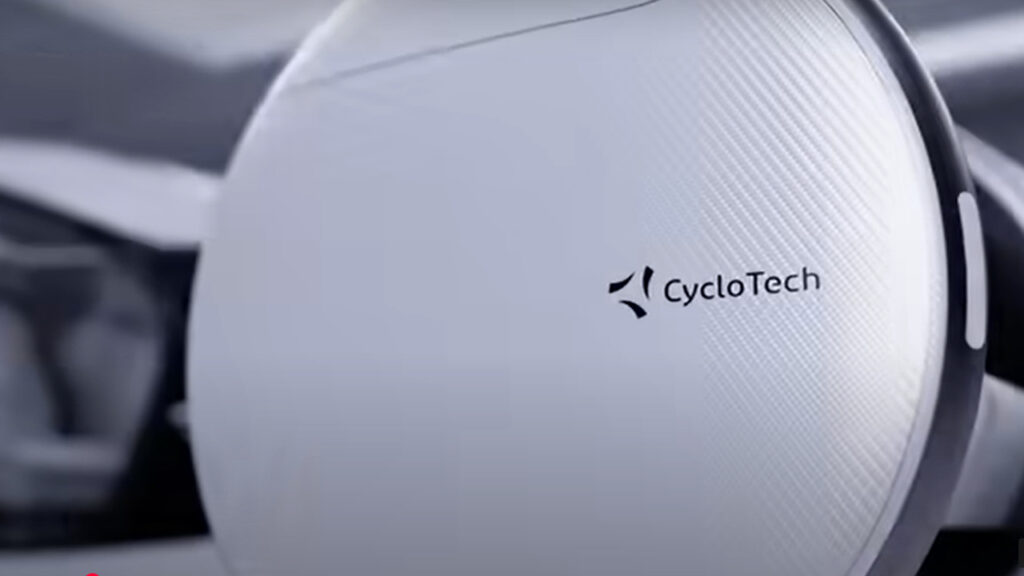
Safety is a top priority for CycloTech. The BlackBird’s six CycloRotors provide redundancy, ensuring the aircraft can continue to fly in a controlled manner even if one rotor fails. (Source: CycloTech)
The aircraft’s 360° thrust vectoring also allows for mid-air braking and stopping, increasing control and safety, especially in busy airspace. This feature enhances maneuverability and provides a smoother ride for passengers. (Source: CycloTech)
Future Prospects and Applications
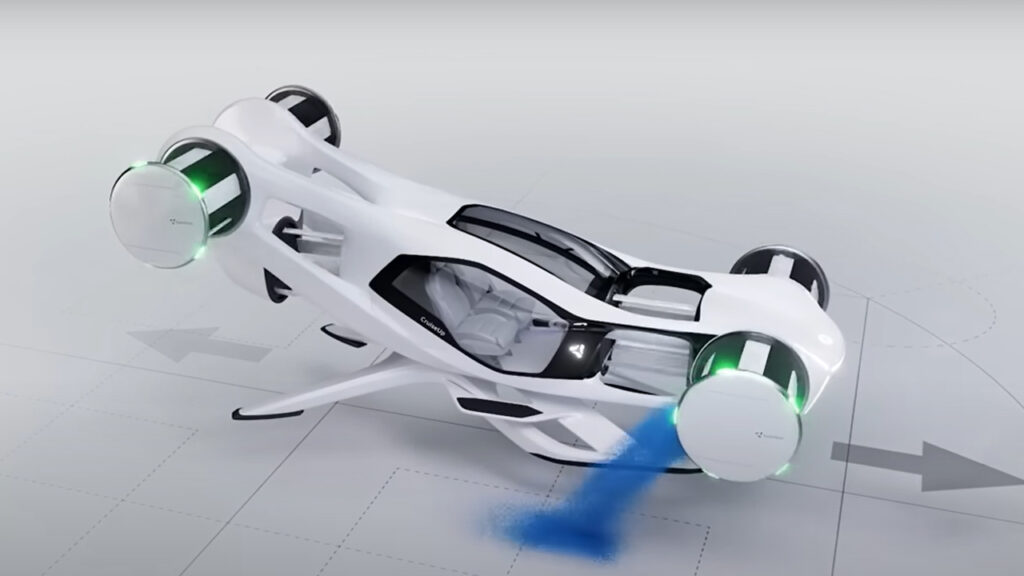
CycloTech envisions the BlackBird as a stepping stone toward the development of flying cars. The company plans to use the knowledge gained from the BlackBird to develop the CruiseUp, a two-seat aircraft intended for personal use. (Source: CycloTech)
With its unique propulsion system and compact design, the BlackBird demonstrates the potential for new forms of urban air mobility. CycloTech aims to position itself as a supplier of drive systems for electric flight. (Source: CycloTech)


